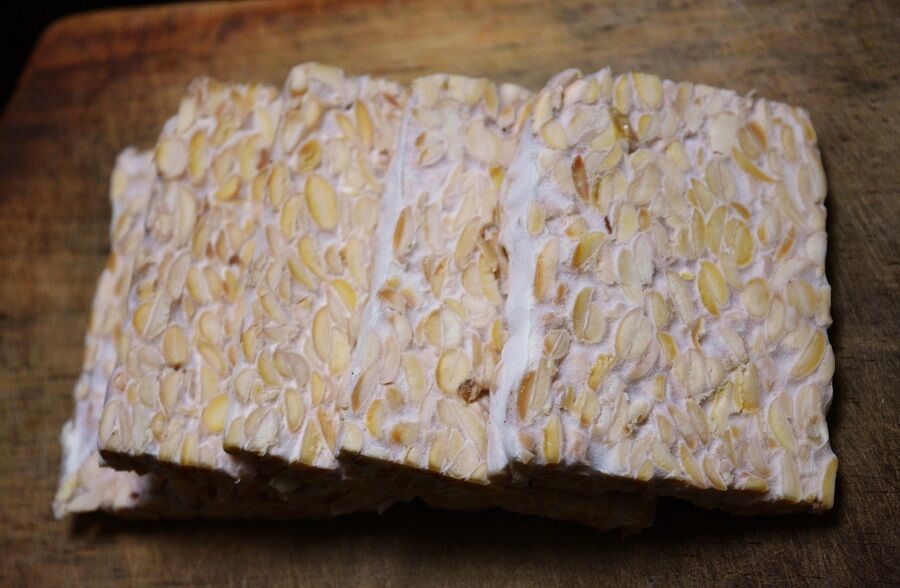Tempeh – a soy alternative to meat
Understanding Spices
Your cart is empty.
SUBTOTAL
£0.00

Understanding Spices
Tempeh (or tempe) is a traditional Indonesian food made from fermented soybeans. Tempeh is commonly used as a replacement for meat in vegan and vegetarian cooking.
The process of making tempeh is controlled fermentation. The soybeans are inoculated with a starter culture containing Rhizopus mold spores, before being fermented in a warm area. As the mycelium grows and spreads, it engulfs and binds the beans into a dense, compact cake or patty.
Tempeh has a mild, savoury taste with a slight nutty and earthy flavour. It’s incredibly versatile and can be used in nearly any dish, as it takes on the flavour of sauces and condiments very easily. Although Asian in origin, tempeh works as a meat replacement in any cuisine, from Mexican tacos to Western burgers. You can find tempeh in most Asian supermarkets or health shops.
In Indonesia, tempeh is cooked in so many different ways. The simplest way of cooking is to deep fry, but other popular methods include:
There are plenty of other ways you can cook tempeh. Slice thinly and deep fry it for a crispy snack. Layer into sandwiches. Sear it like a steak. Crumble as a replacement for minced beef, bake it in a casserole, or add to curries. Search our recipes.
Interested in more tempeh recipes? Take a look at our blog post here.

Another reason why tempeh is so popular is that it’s packed with nutrients. It’s very high in protein, vitamins and minerals, but low in sodium and carbs. Because of its density, tempeh contains more protein than other vegetarian alternatives. 84g of tofu contains 6g of protein, compared to 15g in the same amount of tempeh. It’s also a great source of calcium, with one cup of tempe containing approximately ⅔ of the calcium found in a cup of milk.
One serving of tempeh (about 84g) contains:
Fermented foods naturally contain probiotics, which are good bacteria that are packed with health benefits. Tempeh is fermented using a fungus and is cooked before eating, meaning it contains only small traces of bacteria.
However, tempeh does contain high levels of prebiotics – types of fiber that feed the good bacteria in your digestive system, helping to promote digestive health and reduce inflammation.
Understanding Spices
Spices have long been integral to the UK's culinary landscape, adding depth, flavours, and richness to a myriad of dishes. From the pungent aroma of cumin in Indian curries to...
Read MoreUnderstanding Spices
Confetti is an essential part of any wedding day. Not only is it a wonderful way to greet a newlywed couple, but it also provides some beautiful photo opportunities. The...
Read MoreSeasonal Ideas
It’s no secret that any handmade gift will always be more special than a store-bought one. Homemade food gifts are especially wonderful, a labour of love that shows someone you...
Read MoreHealth and Wellbeing
It’s no secret that winter’s cold and gloomy weather makes us crave indulgent dishes like fondue and baked goods like sticky toffee pudding and apple crumble. While Christmas is the...
Read More